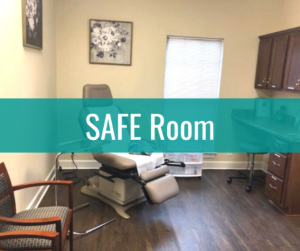SURROUNDING THE AFTERMATH OF SEXUAL ASSAULT
The aftermath of sexual assault is difficult to navigate and when sexual violence myths are added to the mix, it can make survivors doubt themselves and their own realities. Misconceptions circulate about what sexual assault is and why it occurs; these beliefs can gravely affect survivors. Unfortunately, misinformation and victim-blaming environments can impede the effectiveness of the very people and systems who are supposed to help – family and friends, medical staff, law enforcement and social services personnel.
This discussion seeks to clarify some of the most common myths and highlight how these myths can affect sexual assault survivors.
1) Sexual assault is an uncontrollable act of passion and lust.
Fact: Sexual assault is about power and control. It is a violent crime which is not motivated by sexual gratification. Most rapes are planned in advance and opportunity is the most important factor in determining when a rapist will act.
2) Sexual assault only occurs between strangers.
Fact: About 78% of offenders are someone the victim knows – a family member, coworker, friend, date or acquaintance. Most battered women have experienced some form of sexual abuse within their marriage. The reality is that only 22% of rapes are committed by strangers.
3) Women are “asking for it” because of their actions or dress; women cry rape to protect their reputations.
Fact: At times people may do things that are irresponsible or risky (leaving doors unlocked, letting strangers in the home). However, this never dilutes the responsibility of the person who took advantage of the opportunity and committed a crime. Nothing a person does or wears provokes an attack. Rapists look for available and vulnerable targets. It is never the fault of the victim.
4) Males cannot be sexually assaulted.
Fact: It is estimated that 1 in 4 females and 1 in 6 males have a sexually abusive experience before the age of 18. Most male survivors never report being assaulted and tend to downplay the effects, which are damaging for either sex.
5) If a person does not fight back or run away, or if there was no weapon used or injuries sustained, rape did not occur.
Fact: Whatever reaction a person has to an assault is the right response for that individual in that circumstance and is most often produced by biological factors. Many survivors experience a temporary state of involuntary paralysis in which a person cannot move or speak. This may happen in response to the threat of an assault, when a person feels extreme fear and can’t get away. After experiencing tonic immobility, survivors often confront doubt from others and experience personal guilt and shame. It is critical that not only survivors, but also the legal system and other support systems be aware of this response.
The aftermath of a sexual assault is difficult as survivors experience a variety of intense emotions and must make decisions about what to do next. The people and systems surrounding a survivor can produce an environment in which healing is possible. Myths must be addressed for healing to occur.
Shelly Wright, LCSW, Sexual Assault Therapist & Clinical Supervisor
References:




